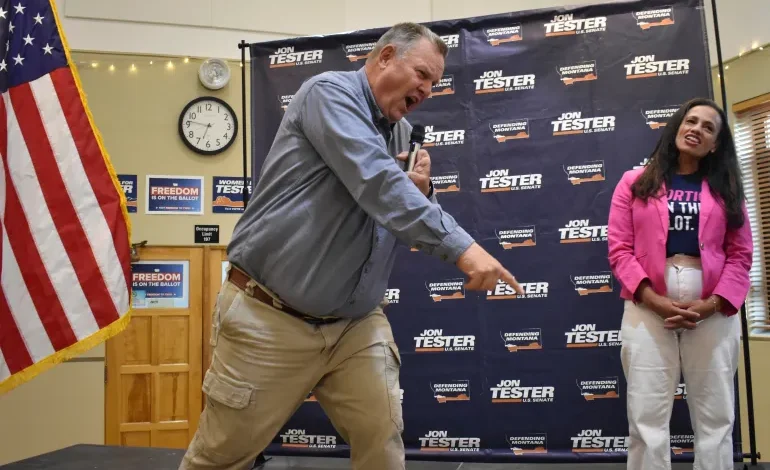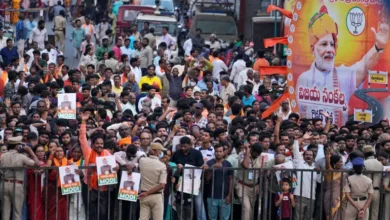Could the US Senate flip to the right? Eight races to watch this election

All eyes seem glued on the United States presidential race, as former President Donald Trump attempts to eke out a victory over Vice President Kamala Harris.
But as both candidates strive to pull ahead in the nail-biting race, other contests are set to unfold across the country, with the balance of power at stake.
The general election on November 5 will not only decide the next president but also which party controls the two chambers of Congress: the Senate and the House of Representatives.
Right now, Congress is split. The Republicans lead the House, while the Democrats hold the Senate.
But many political analysts speculate the Senate could be on the verge of flipping to Republican control this election cycle, making its races ones to watch.There are 100 seats total in the Senate, a third of which are up for grabs every two years. Democrats and allied independents currently claim 51 seats — a narrow lead that could easily be lost.
Thirty-four Senate seats are up for a vote this election year. Of those, eight races are considered tightly competitive.
And the odds are not on the Democrats’ side. Seven of those eight embattled seats are currently occupied by Democrats. Only one Republican-held seat is considered up for grabs.
Ultimately, whoever controls Congress controls the ability to pass legislation, among other powers. And that could buoy or doom any incoming president’s agenda.
So whose Senate seats could switch sides? Check out which states are in the hot seat below.
Control of the Senate may come down to Montana, a sprawling, largely rural state in the north with a population of just 1.1 million.
Montana Democrat Jon Tester has held his seat in the US Senate for three terms, but the farmer-turned-politician has repeatedly faced punishing challenges in the solidly red state.
The state is considered a strong base of Republican support. Montana, for instance, has consistently voted for Republican presidential candidates since 1968, save for a narrow victory by Democrat Bill Clinton in 1992.
Montana State University political scientist Jessi Bennion has described Tester as a “unicorn” — a rare Democrat to succeed in a statewide vote. But Bennion warns he could also be a dying breed.
“He was a farmer. He was a rural Democrat, the last rural Democrat,” Bennion told The Associated Press news agency.
Tester’s challenger this election cycle is former Navy SEAL and businessman Tim Sheehy, a Trump-backed Republican candidate.
Recent polls show Sheehy leading as November’s vote approaches. Analysts like Bennion note that Sheehy’s numbers have been bolstered by economic and social trends.
For example, the growth in Montana’s population, fuelled by the tech industry and tourism, has contributed to a cost-of-living crisis and increases in housing prices across the state.
That has eaten into Tester’s support among unions and in Montana’s more liberal pockets.
Wisconsin used to be part of the Democrats’ “blue wall”: a group of states that voted consistently for the left-leaning party.
But over the last eight years, the state has become one of the most coveted swing states in the country.
Democrat Tammy Baldwin came to power during the “blue wall” years. Since she was 24 years old, she has been politically active in the midwestern state: Her first elected office was on the Dane County Board of Supervisors in 1986.
She went on to join the US House of Representatives in 1999, as the first woman to represent the state in Congress. Then, in 2012, she also became the first openly gay person elected to the US Senate.
She has touted herself as a reliably progressive member of the party and comfortably won re-election in 2018.
But this year’s election is a different story. Her early lead in the polls has evaporated as November’s election day nears.
She faces Republican Eric Hovde, a millionaire banking executive. Hovde has poured millions of dollars of his own money into the race and has attacked his Democratic rival for government spending and inflation. He has also called for the US-Mexico border to be closed.
Baldwin, meanwhile, has sought to position herself as the candidate with experience, compared with Hovde, who has never held public office.
Senator Sherrod Brown is another Democrat in an increasingly red state: Ohio.
Each state has two seats in the US Senate, and in 2022, during the last election cycle, the tight nature of Ohio’s races was on full display, as political newcomer JD Vance won a competitive race for Ohio’s second Senate seat.
Senator Vance is now Trump’s running mate on the Republican presidential ticket.
In contrast to the freshman Ohio senator, Brown is a longtime Ohio politician who served in state government before being elected to the US House and later the Senate.
The Democrat has cultivated a populist, pro-union reputation, cutting a professorial figure in his often-wrinkled suits.
Brown first reached the Senate in 2006, defeating a two-term Republican incumbent. But now Brown himself is the incumbent, and polls show him vulnerable to his Republican challenger, Bernie Moreno, a Colombian immigrant and car dealership owner.










